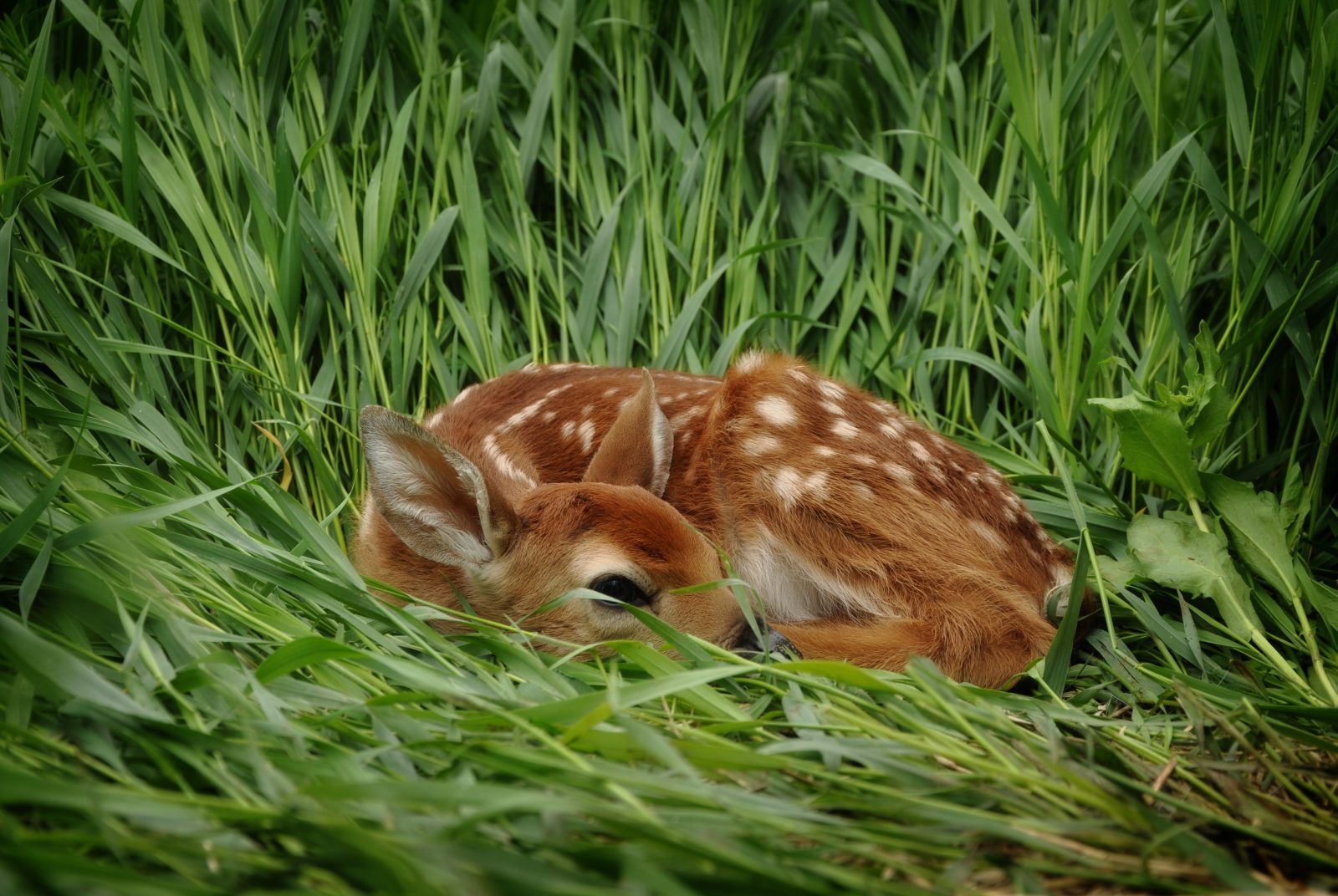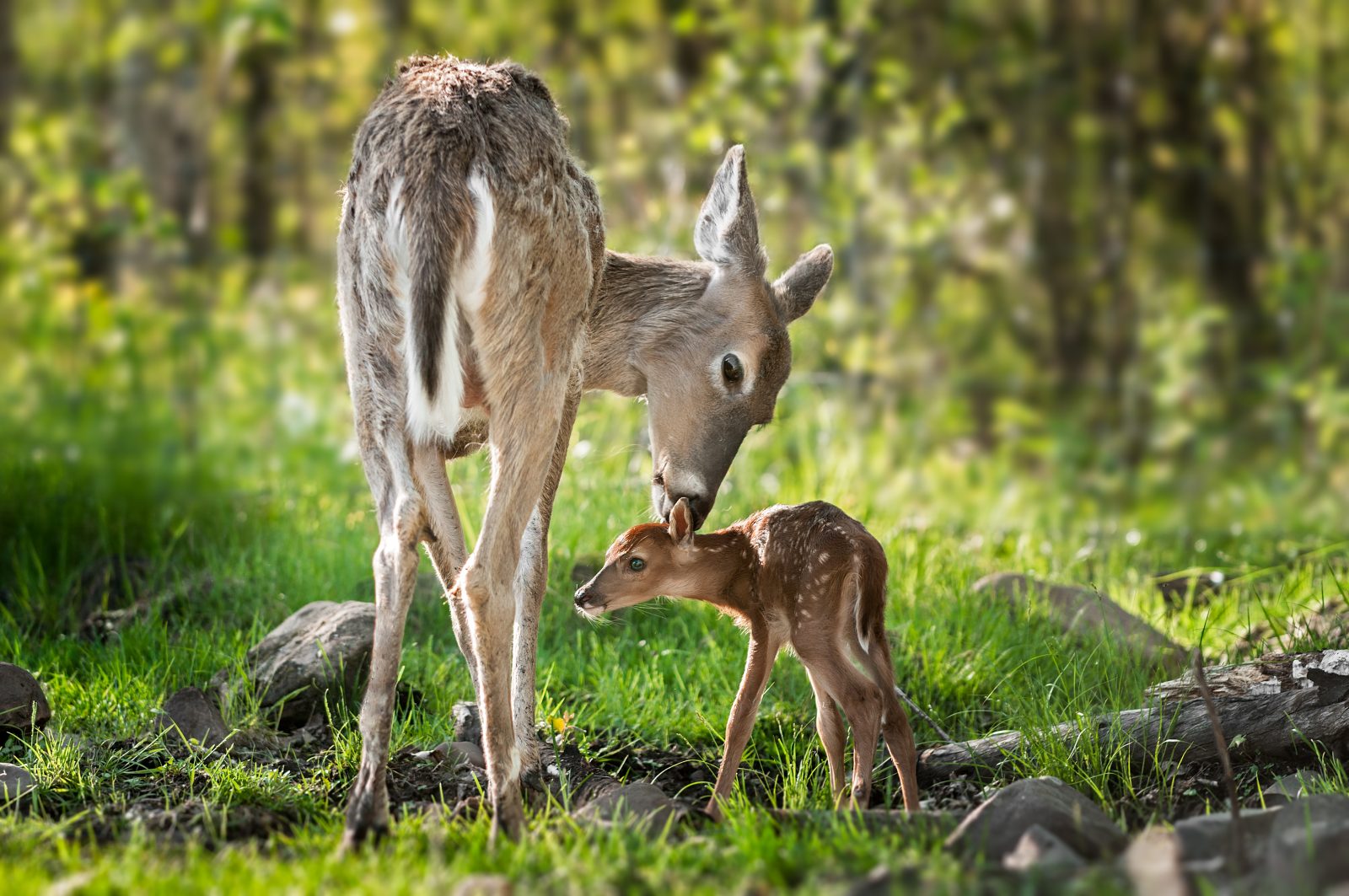It’s that time of year again when white-tailed deer fawns are showing up in yards and hayfields, and concerned citizens want to know how to help. In almost all cases, the best way to help is to simply give the fawn space and leave it alone.
Concerned people sometimes pick up animals that they think are orphaned. Most such “orphans” that good-intentioned citizens “rescue” every spring should have been left alone. Most wild animals will not abandon their young, but they do leave them alone for long periods of time.

Fawns, born from May through July, are purposely left alone by their mothers. Female deer, called does, stay away from the fawns to avoid leading predators to their location. The white-spotted coat camouflages a fawn as it lies motionless in vegetation. Young fawns generally will not try to run away when they are approached.
Does will return several times each day to move and/or feed their young. You probably will not see the doe at all since she only stays to feed the fawn for just a few minutes before leaving it alone again. If less than 24 hours have passed since a fawn has been “rescued,” the fawn should be taken back and released at the exact same location where it was found. After returning the fawn, immediately leave the area and do not wait for the doe to return. The doe will not come back for the fawn if a human is nearby.

Help Keep Wildlife Wild
If a wild animal has been injured or truly orphaned, do not take matters into your own hands. You may locate a licensed wildlife rehabilitator by calling the Virginia Department of Wildlife Resources (DWR) toll-free wildlife conflict helpline at 1-855-571-9003, 8:00AM-4:30PM, Monday through Friday or visit the Licensed Wildlife Rehabilitator section of the DWR website.
Raising a wild animal in captivity is illegal unless you have a DWR wildlife rehabilitation permit. Each animal’s nutritional, housing, and handling requirements are very specific and must be met if they have any chance of survival. With even the best professional care possible, the survival rate of rehabilitated fawns and many other animals is very low. The best advice for someone who wants to help wildlife is to keep it wild. Once people interfere, we reduce the opportunity for animals to receive natural care and we increase the risk of harming our wildlife heritage.

